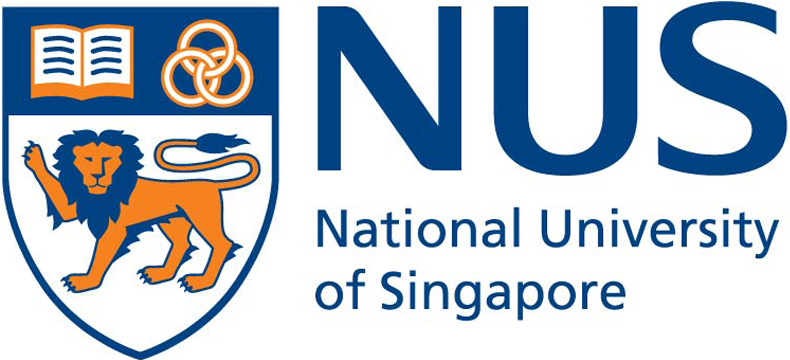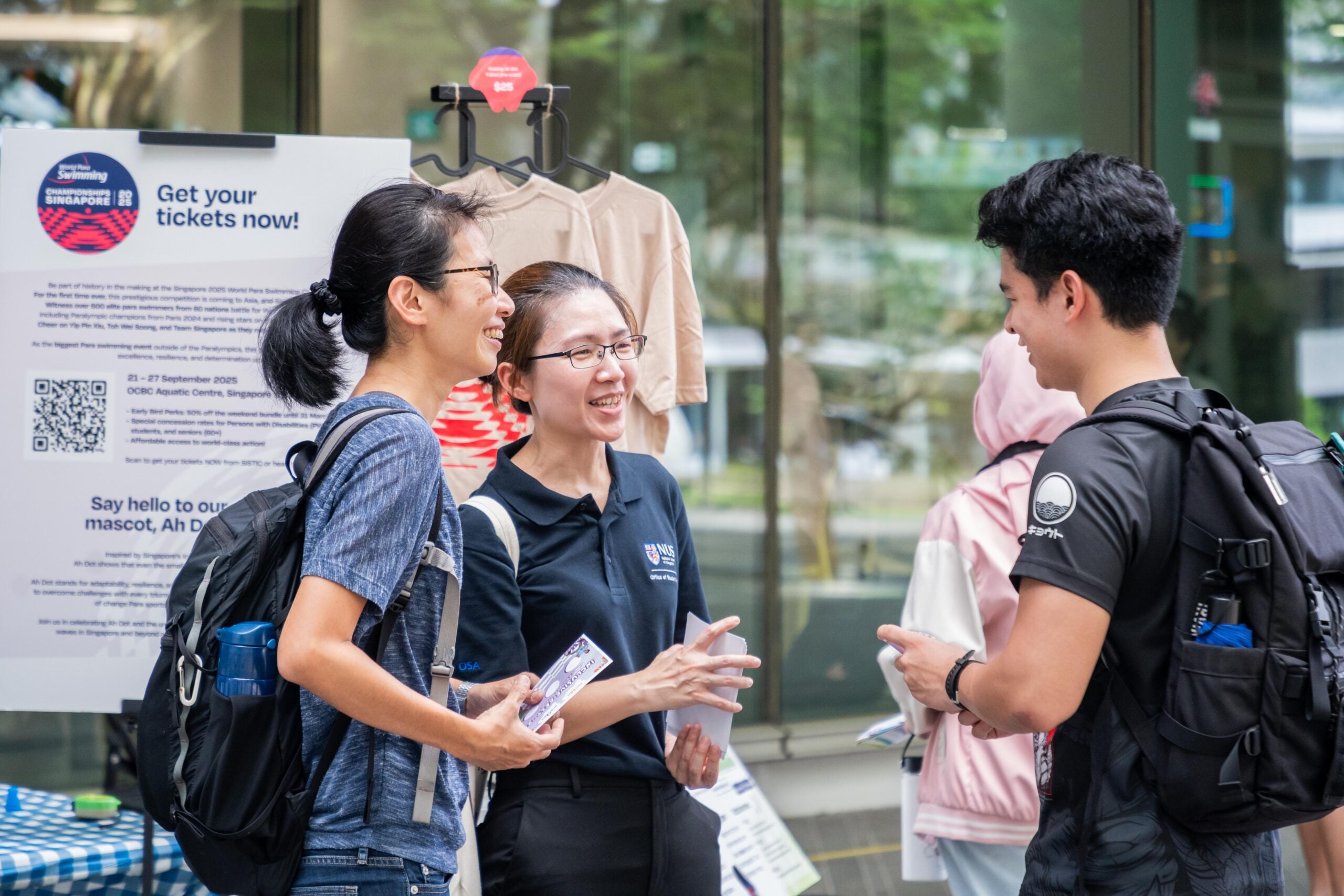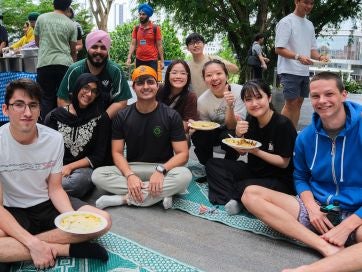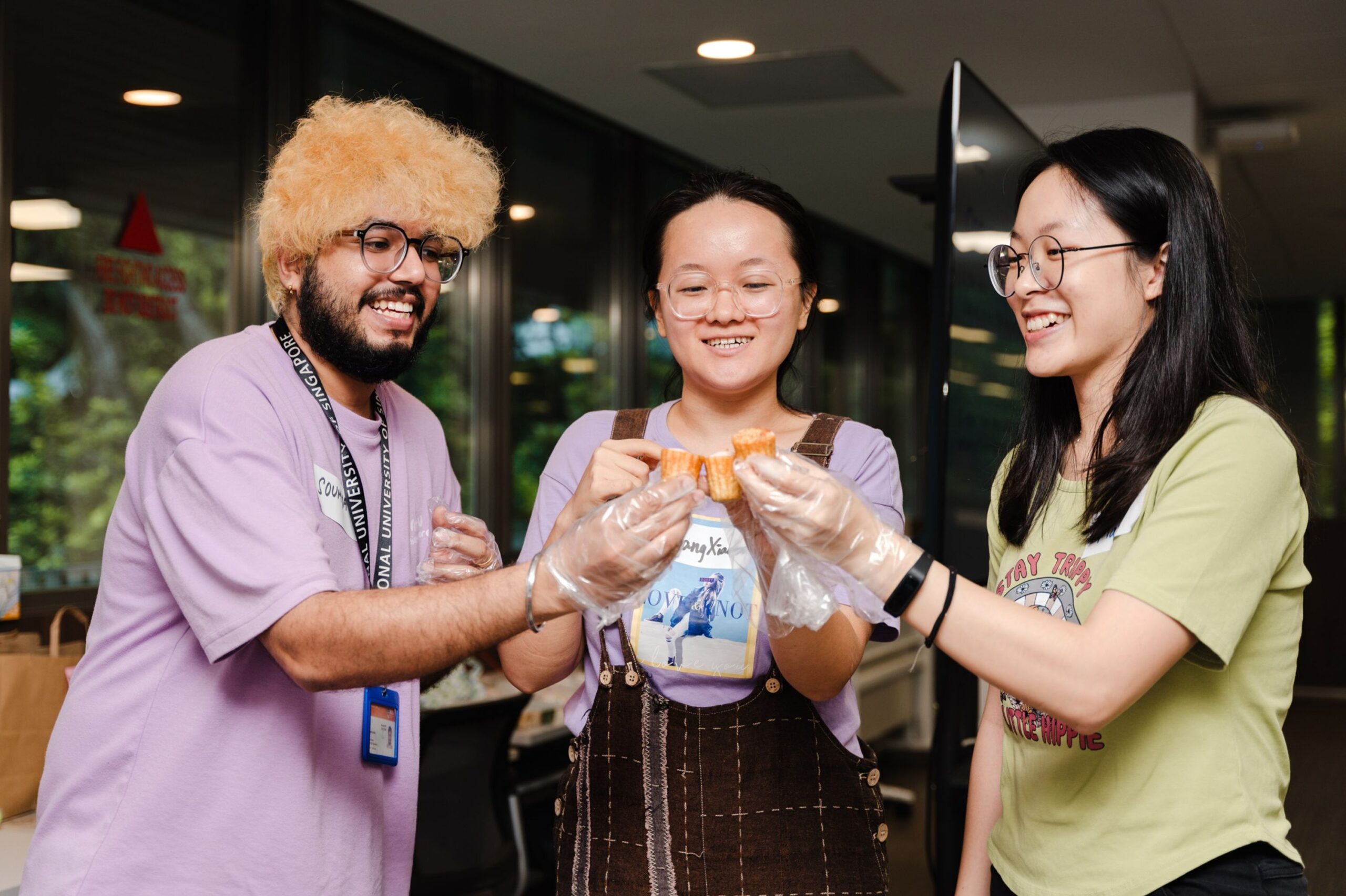Championing Accessibility, Awareness, and Empathy
As part of mOSAic@NUS 2025, Inclusive Fest brought together students, staff, and faculty across the university in a vibrant celebration of community and inclusive design. Organised by the Student Accessibility Unit (SAU) and the NUS Enablers, a student-led interest group that advocates for accessibility and awareness on campus, the event reflected this year’s theme, Crossroads.
Reflecting the festival’s commitment to access and inclusion, this photo journal pairs written content with detailed image descriptions. This approach acknowledges that not everyone experience visual content similarly, inviting readers to slow down, notice details, and engage more intentionally with each moment captured. By combining narrative and visual context, the piece becomes more inclusive and foster a deeper way of seeing, understanding, and relating to the stories shared.
Through hands-on booths, thoughtful conversations, or moments of joy, the festival invited reflection on how access can be experienced, imagined, and co-created in everyday spaces. Workshops, lived experience sharing, and design innovation encouraged the NUS community to explore ways to foster support, empathy, and participation.
At the heart of the event were the students. From hosting booths and designing interactive activities to initiating conversations, they played a key role in shaping a more thoughtful and connected NUS.
The day featured a wide range of highlights, including:
- Deaf Culture, Community and Language workshop led by facilitators from the Singapore Association For The Deaf
- Boccia tryouts organised by the Singapore Disability Sports Council
- An accessibility-themed OneMap showcase by the Singapore Land Authority
- Mobile massage and braille education booths from the Singapore Association Of The Visually Handicapped
- Inclusive architecture presentations and student-led sign language outreach
At the SIGNapse booth, student volunteers chatted about inclusive communication and the value of learning SgSL. Their message: bridging communication gaps starts with awareness and effort. Anyone can be part of that change.
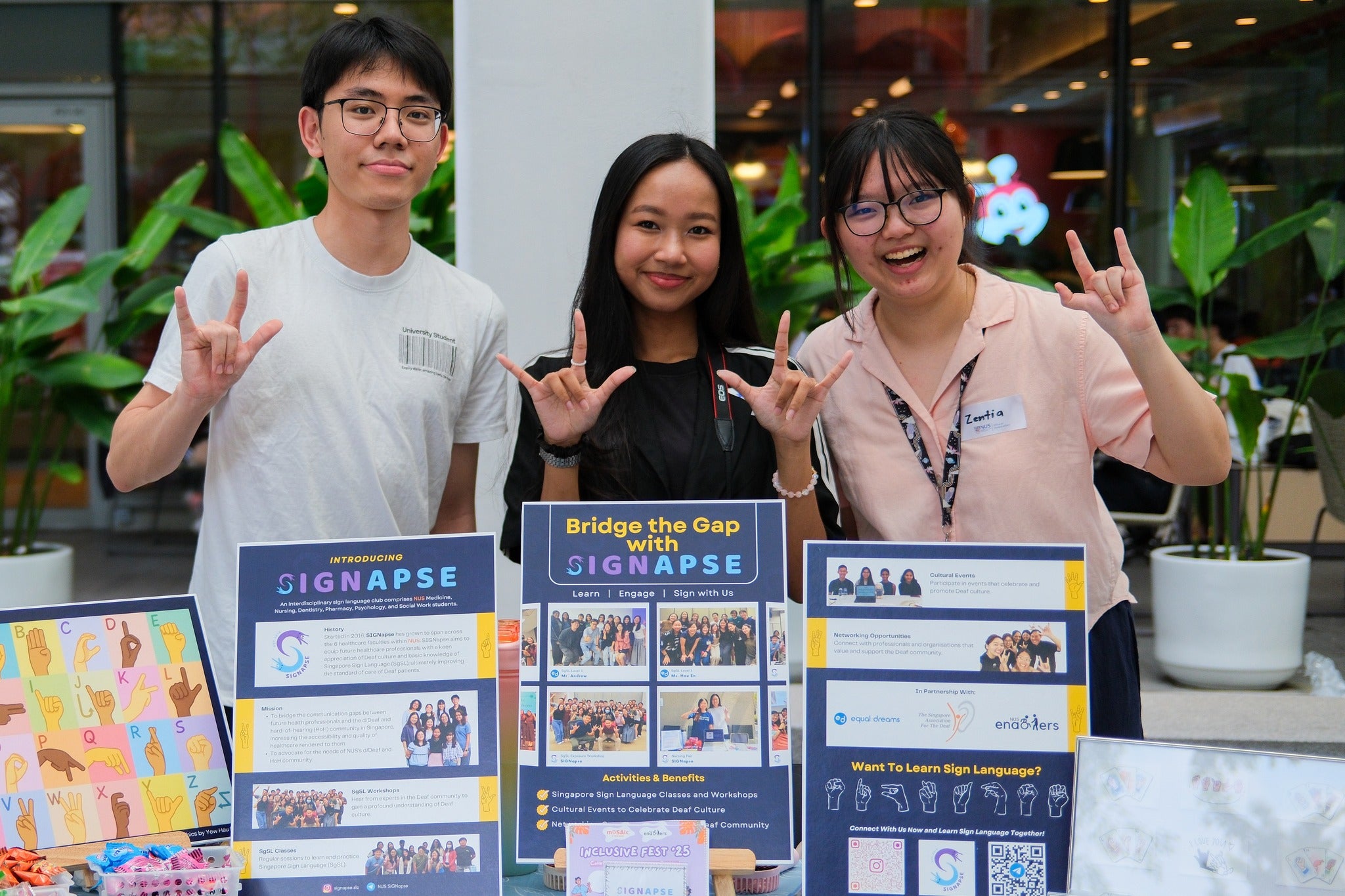
At the SIGNapse booth, three student members stood smiling for the camera, hands mid-sign, in front of colourful displays about Singapore Sign Language (SgSL) and Deaf culture. As a student interest group, SIGNapse works to bridge communication between Deaf and hearing communities through sign language learning, immersive experiences, and advocacy. This year marked their first participation in Inclusive Fest. What began as peer-led classes has evolved into a more intentional model, now delivered in collaboration with Deaf instructors who are native SgSL users. This approach not only enhances linguistic understanding but also centres cultural respect and lived experience. The booth offered a reminder that inclusion involves more than acquiring skills. It calls for recognising whose voices are represented, who leads the learning, and how spaces can be shaped to honour community leadership.
A festival of awareness, dialogue, and design
Nearby, participants took part in a Deaf Awareness Programme led by Deaf facilitators who are native users of Singapore Sign Language. A sign language interpreter was present to support communication offering access and a reminder that inclusion also means respecting how people choose to express themselves and creating spaces for everyone to be heard as they are.
The atmosphere was inviting, and attendees eagerly learned how gestures, expressions, and shared space could become powerful tools for communication and connection.
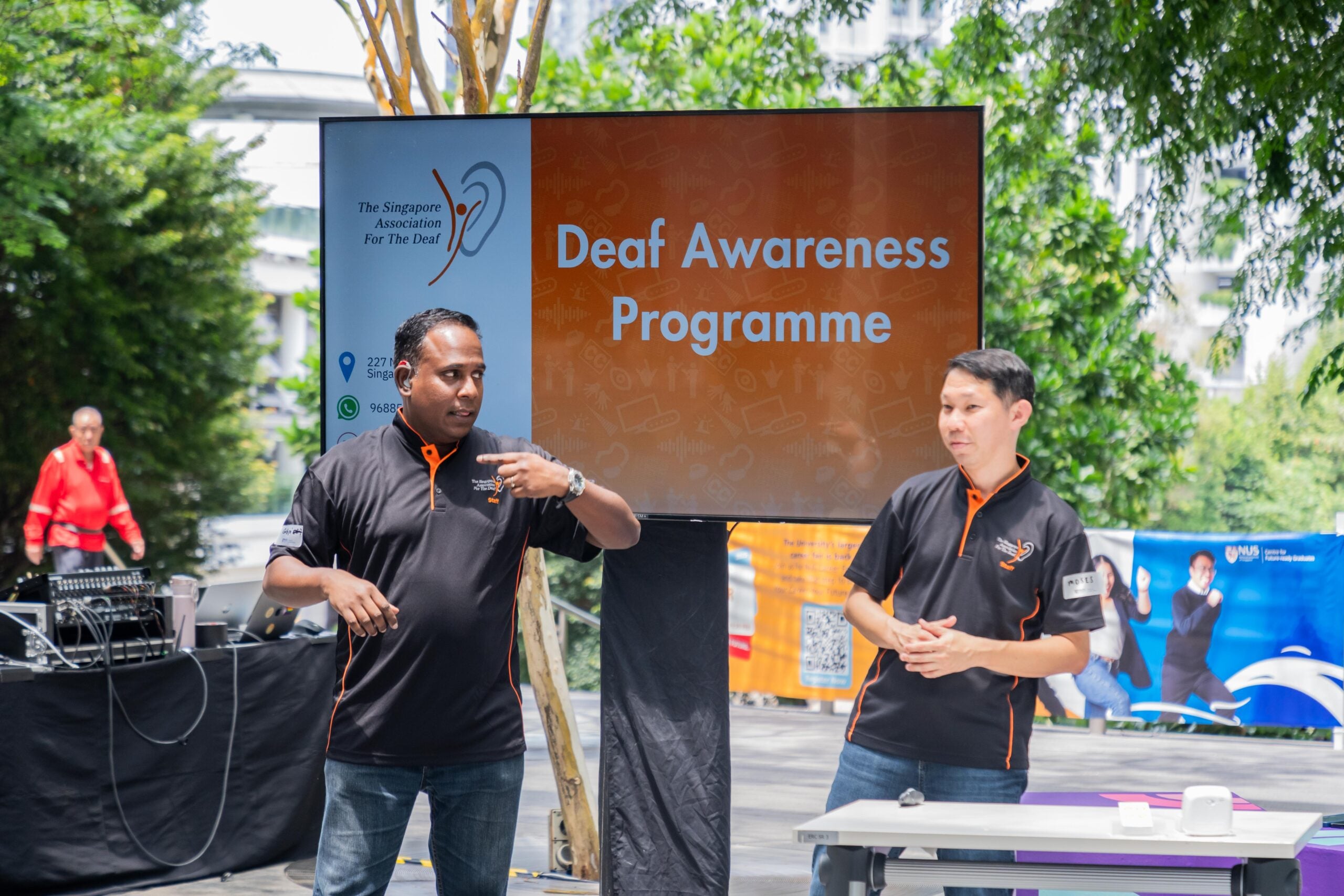
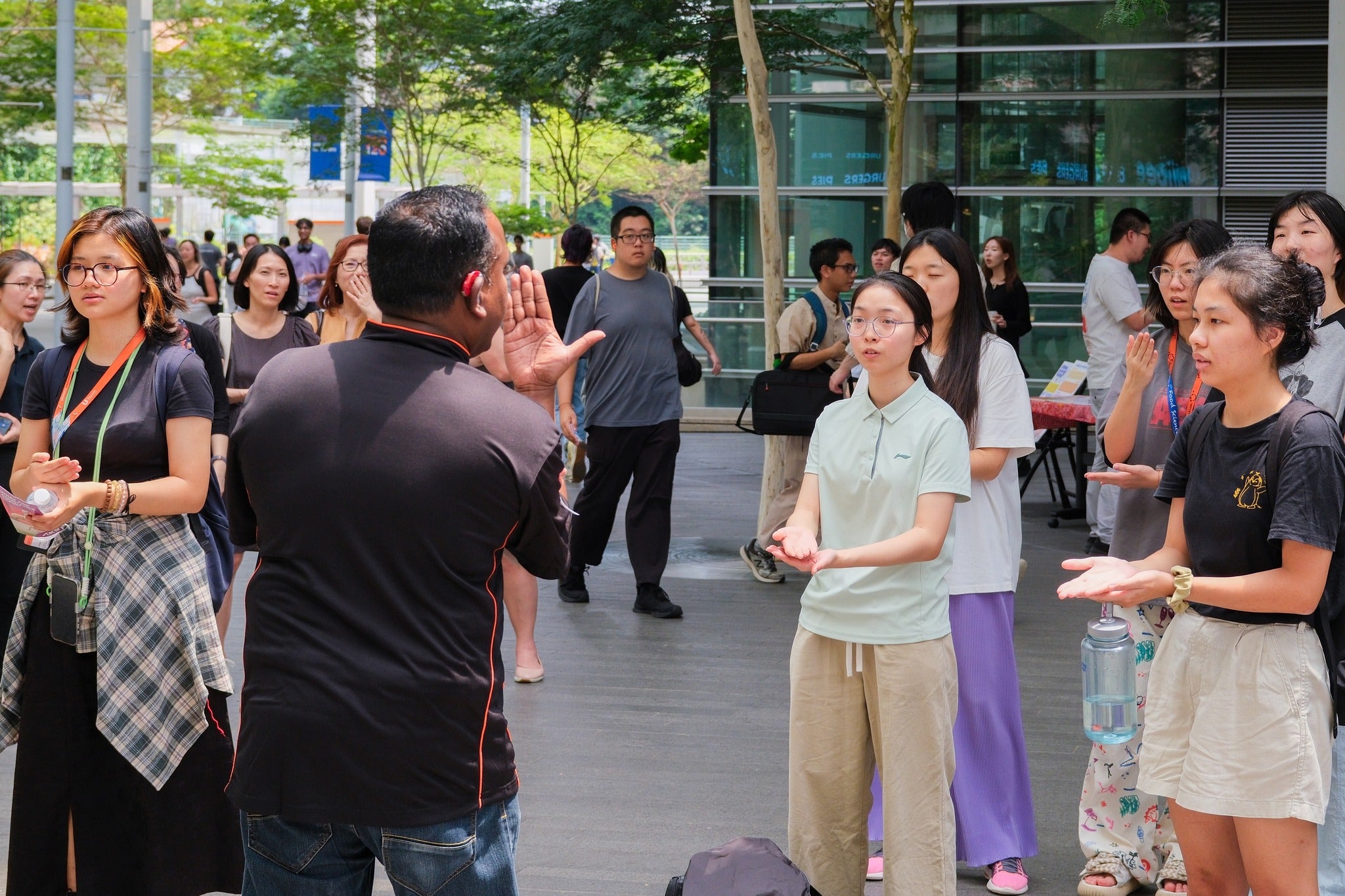
During an outdoor session, a SADeaf facilitator demonstrated a sign with one hand raised, while a semi-circle of students mirrored his movements with quiet focus. Set against a backdrop of trees and passers-by, the session offered more than an introduction to sign language, it was a fully immersive experience. Through gestures, expressions, and shared visual cues, participants engaged in a form of communication that centred attention, presence, and connection. Rather than passive observers, attendees became active participants in a cultural and linguistic space shaped by Deaf experience. The session invited reflection on the essence of communication and offered a call to build community through mutual respect and diverse ways of engaging.
Booths that brought learning to life
Throughout the day, booths like those from the Singapore Association of the Visually Handicapped (SAVH) offered multi-sensory experiences. The Mobile Massage Team, made up of trained therapists with visual impairment, provided head and shoulder massages.
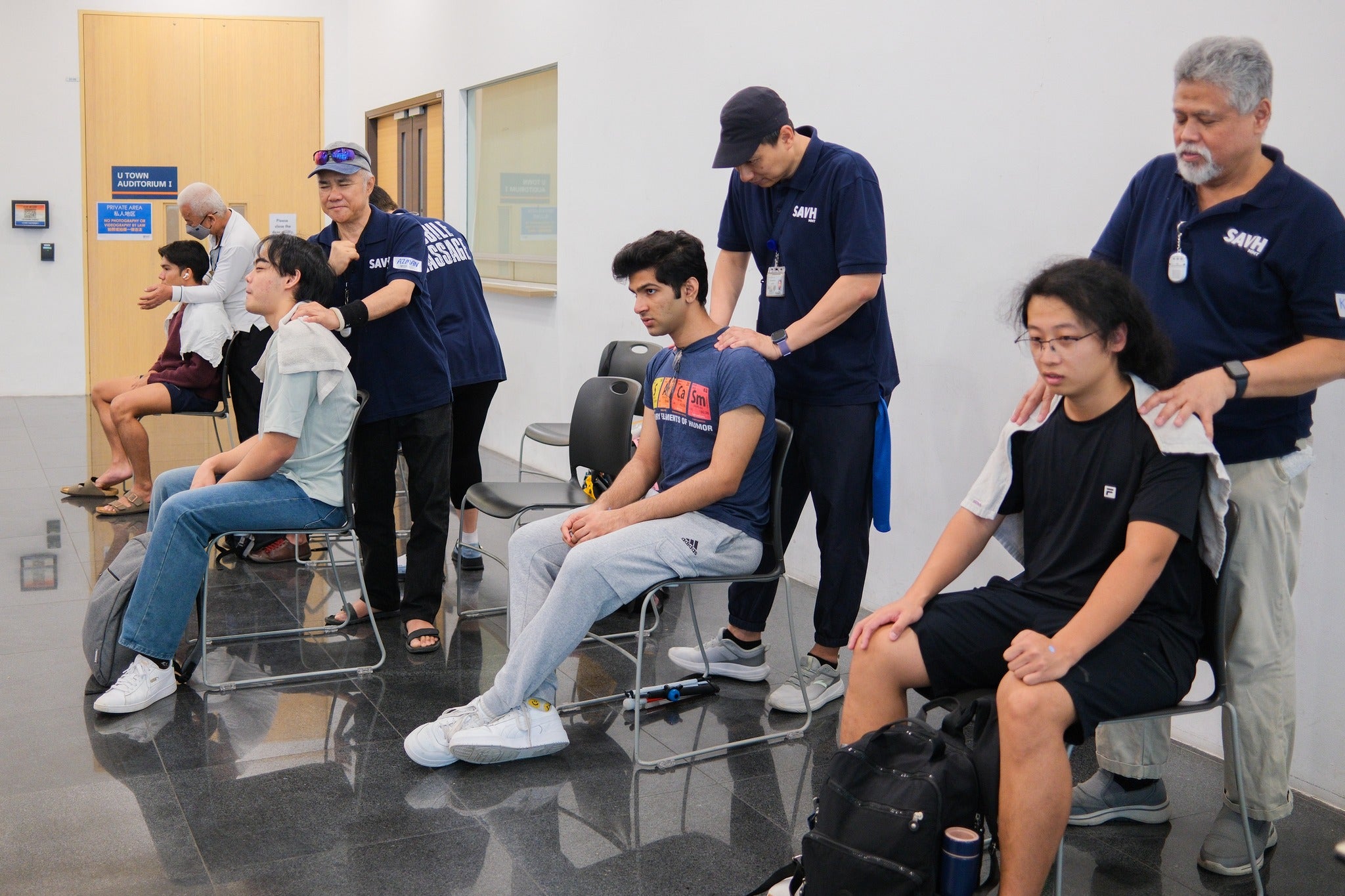
At the SAVH booth, visitors received seated shoulder massages from the Mobile Massage Team, professionally trained therapists with visual impairment. Surrounding the space were posters offering practical tips on respectful communication and guiding etiquette, grounded in lived experience and aimed at supporting autonomy and dignity.
For many, the experience challenged common assumptions. Care work, particularly when performed by individuals with disabilities, is often undervalued or mischaracterised. Yet here, professionalism, attentiveness, and skill were clearly on display. The booth became more than a service station, it was a space for learning, reflection, and unlearning. It reminded attendees that inclusion involves not just awareness, but respect for expertise, and a rethinking of how value and contribution are recognised in the community.
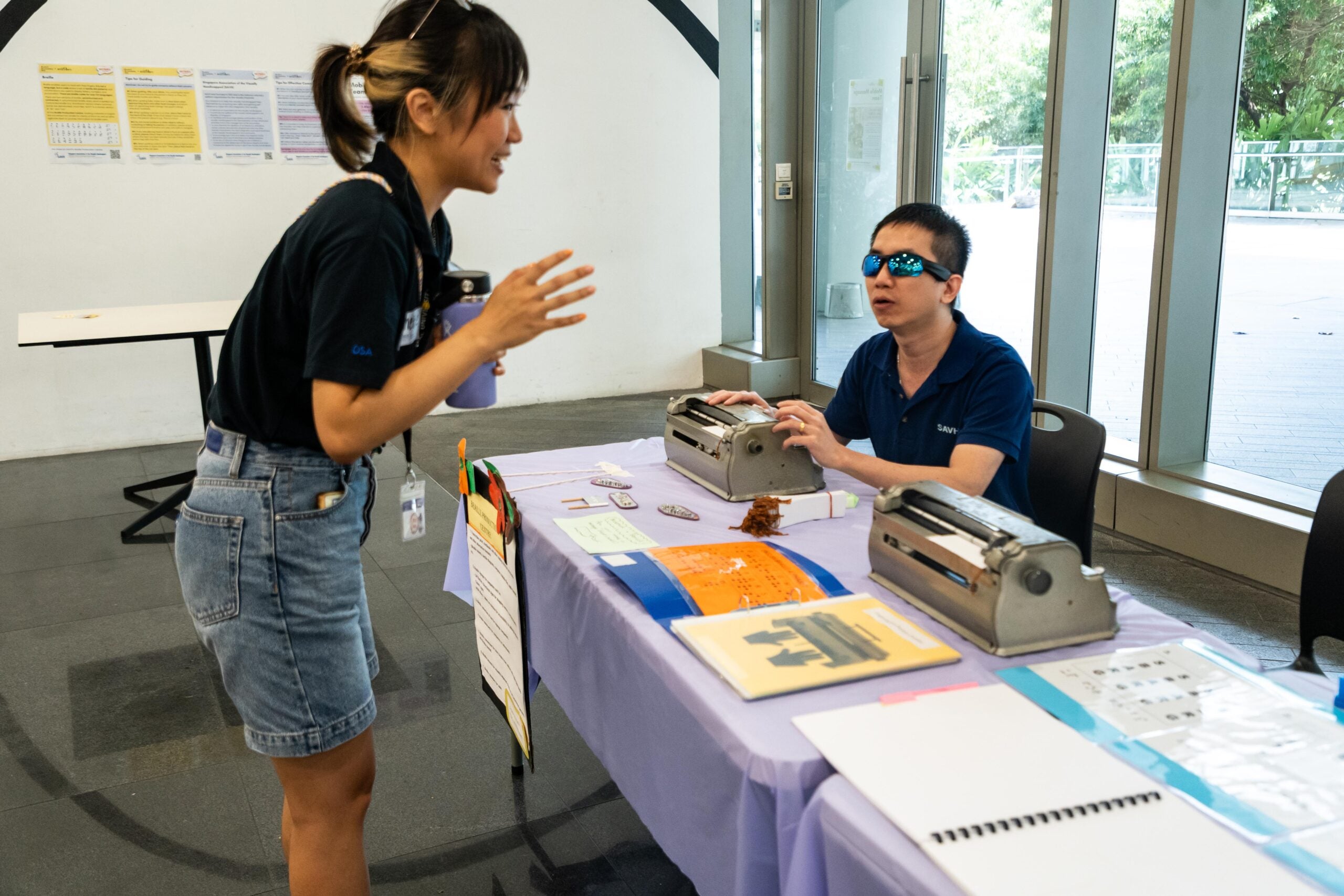
Visitors also had the opportunity to learn about the work of SAVH’s Braille Production Centre, where printed materials are carefully converted into braille. The display offered a rare glimpse into the detailed process behind making information accessible: work that often goes unseen but plays a vital role in inclusive education and communication. It served as a reminder that accessibility is not automatic; it is intentionally built through skill, care, and the conviction that everyone should be able to engage with the world in ways that work for them.
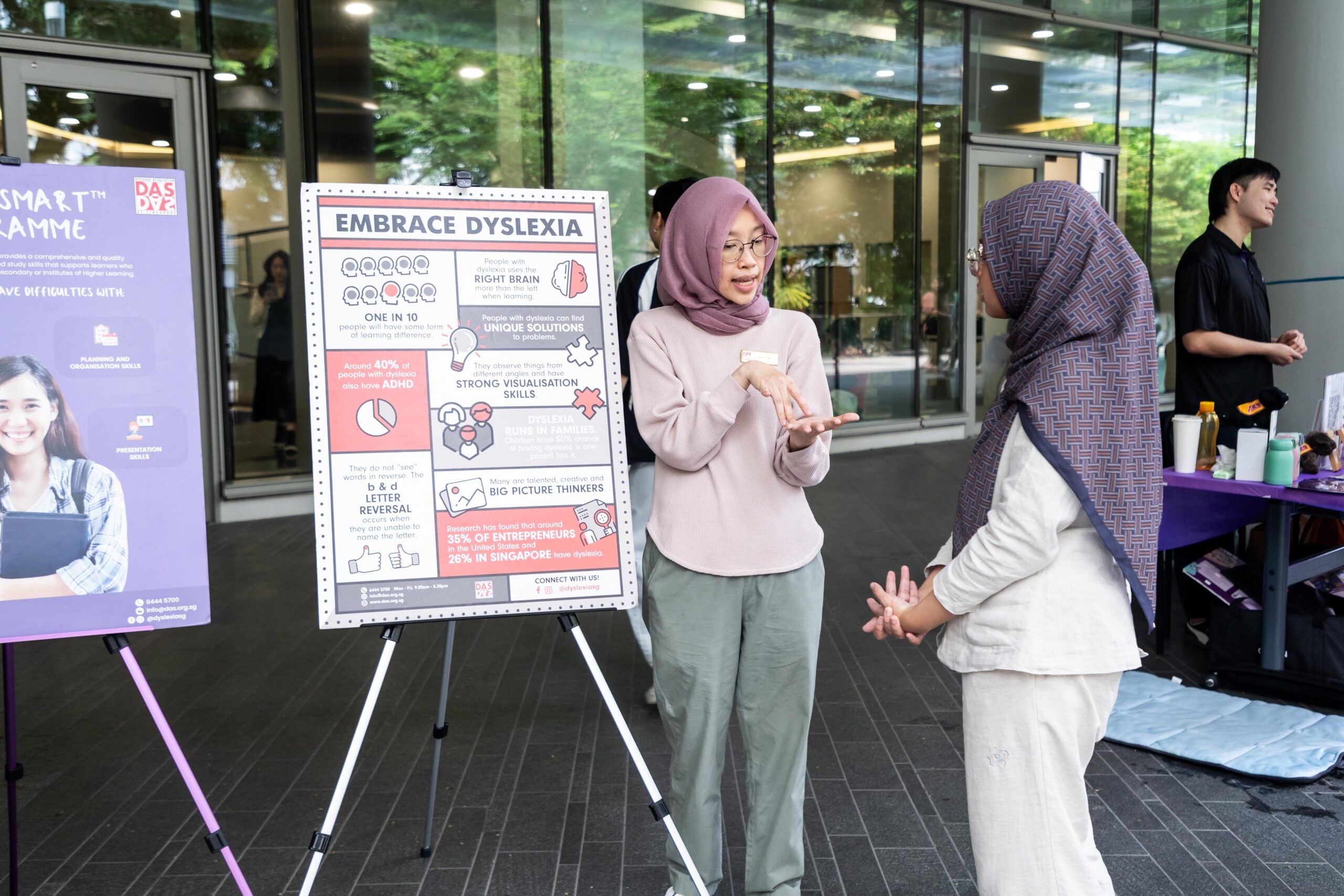
At the Dyslexia Association of Singapore (DAS) booth, a visitor engaged in conversation with a staff member while standing in front of a vibrant “Embrace Dyslexia” display board. The exhibit highlighted learning diversity and celebrated varied thinking styles, setting the tone for meaningful conversations about learning differences, particularly dyslexia. DAS psychologists shared how psychological assessments are used not to label individuals, but to better understand how they think, learn, and process information. These assessments reveal not only areas of difficulty, but also strengths, encouraging a more expansive view of intelligence and ability.
For instance, someone with dyslexia may find reading challenging but excel in auditory processing. Tools such as text-to-speech software, originally developed for accessibility, are now widely used by learners of all kinds. Many rely on audiobooks or voice notes without realising their origins as inclusive solutions. The booth served as a reminder that accessibility often drives innovation, and that learning from cognitive differences opens up more inclusive possibilities for all.
Over at the K9Assistance booth, Singapore’s first ambassador dog, Sienna, stole the show. Calmly walking alongside a team member in her purple vest, she engaged with volunteers from the crowd and demonstrated how service animals can support with a number of tasks and independent navigation.
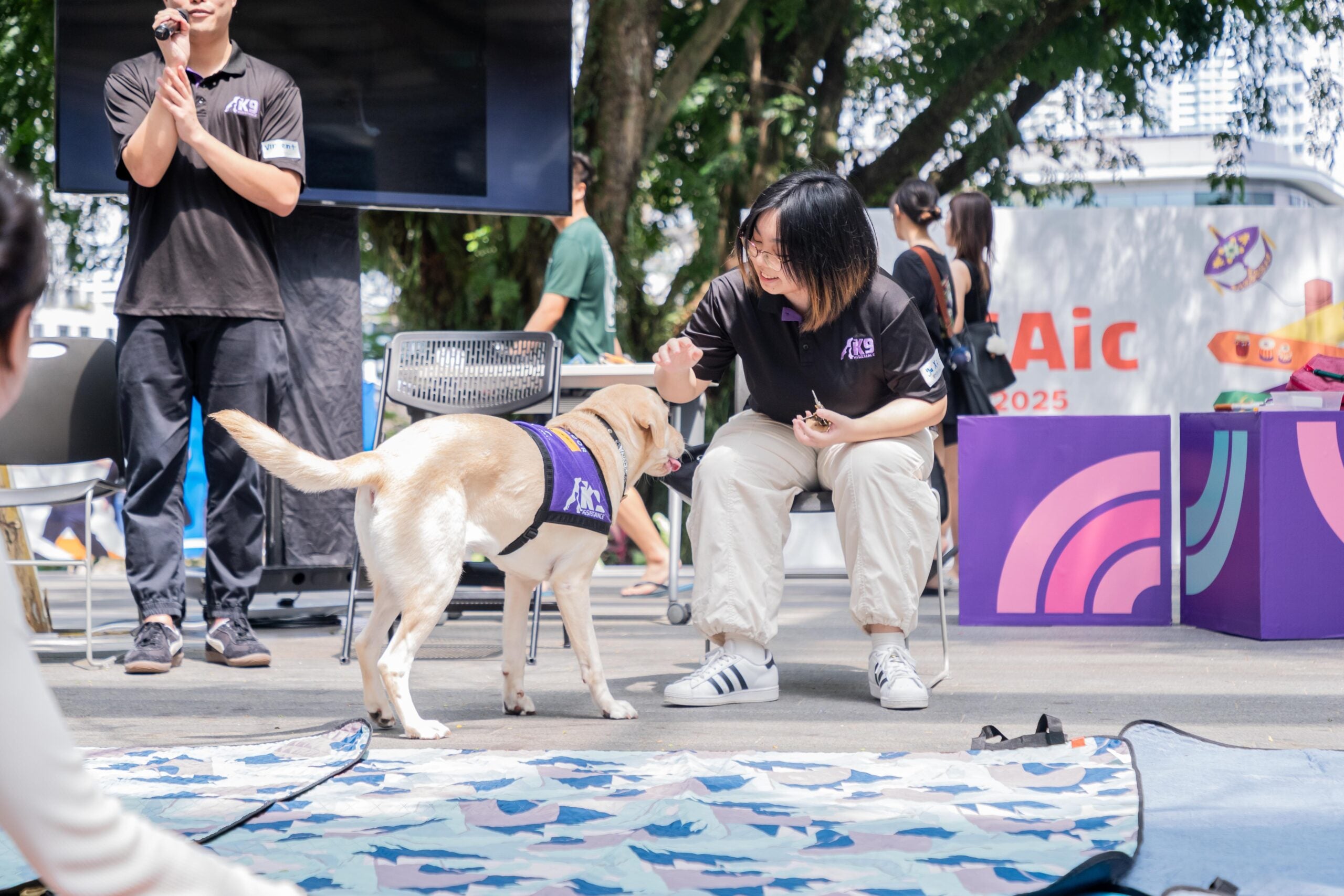
Sienna, Singapore’s first assistance dog, walks calmly across a demonstration area in her signature purple vest. Nearby, a K9Assistance team member gestures toward her while seated, guiding the audience through a live demonstration of how assistance dogs support everyday mobility and access. The session takes place outdoors, surrounded by trees and natural light.
More than companions, assistance dogs are trained access workers. They play a vital role in supporting individuals through specific, skilled responses: retrieving objects, offering emotional support, and helping navigate environments not always designed with varied needs in mind. Their presence challenges the idea that access must be physical or structural; it can also be embodied, intuitive, and relational.
For many, the bond between a person and their assistance dog can mark the difference between isolation and connection. At its heart, this form of access is built on trust, attentiveness, and deep communication – both spoken and unspoken. It’s a reminder that inclusion isn’t only about infrastructure or policy, but also about relationships that foster safety, confidence, and dignity.
Nearby, participants tested their aim in the precision ball sport, boccia, a game that showed how sport can be accessible and welcoming to all.
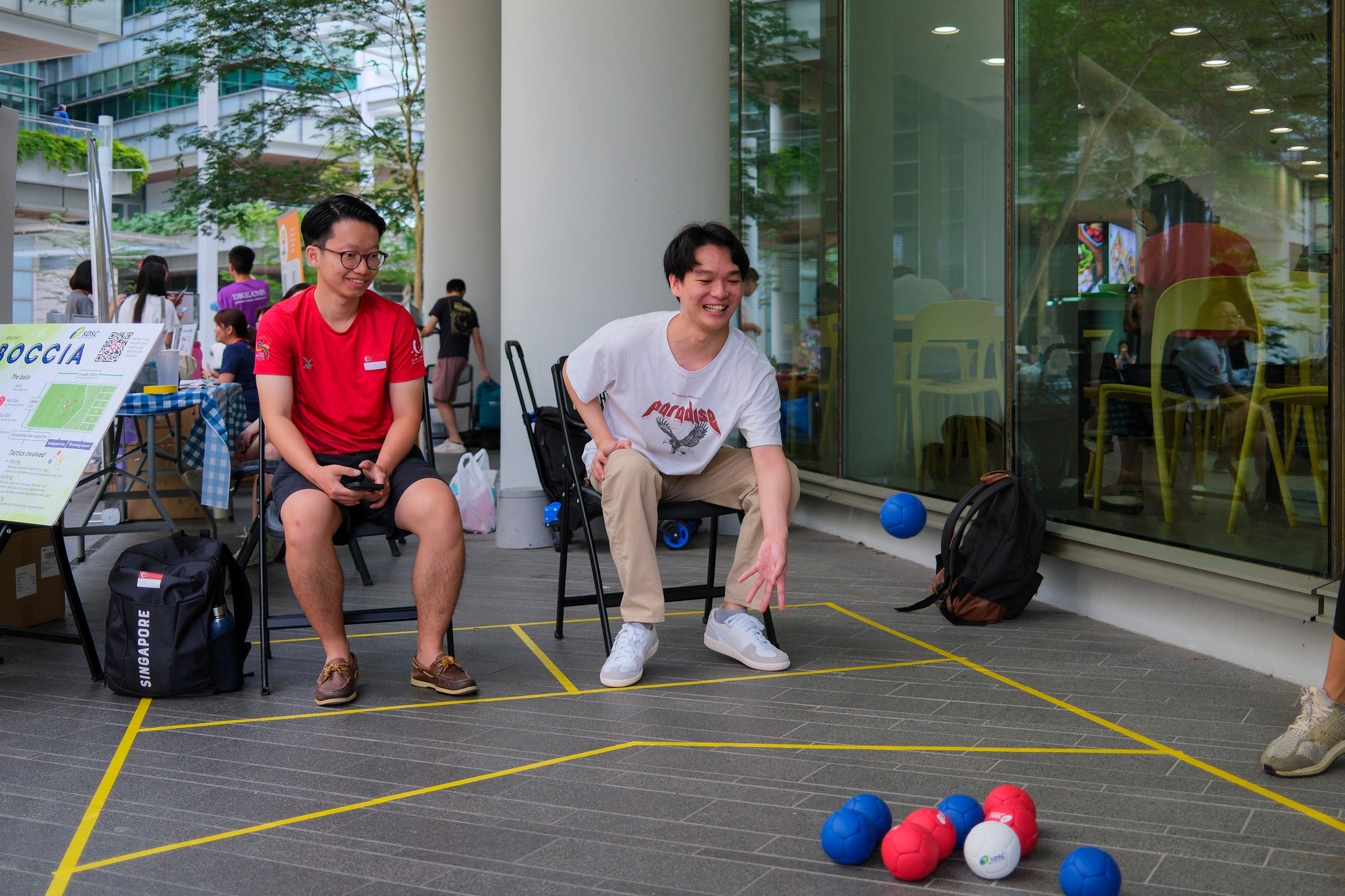
Two participants sit side by side, aiming red and blue balls toward a white target ball at the centre of a marked court. Their focus is sharp, but the atmosphere is light, where strategy and joy unfold together.
Boccia invites a rethinking of what sport can be and who it includes. It challenges the idea that competition depends on uniform ability, showing instead that participation thrives when games are intentionally designed to welcome different ways of moving and thinking. At its core, boccia is about precision, adaptability, and connection—values that matter just as much off the court as they do on it. In this setting, inclusion wasn’t an exception; it was the spirit of the game.
OneMap, Singapore’s official digital mapping platform, presented its barrier-free navigation features at the SLA booth. Visitors explored maps, engaged in discussions about mobility, and discovered how urban navigation can be designed with access in mind.
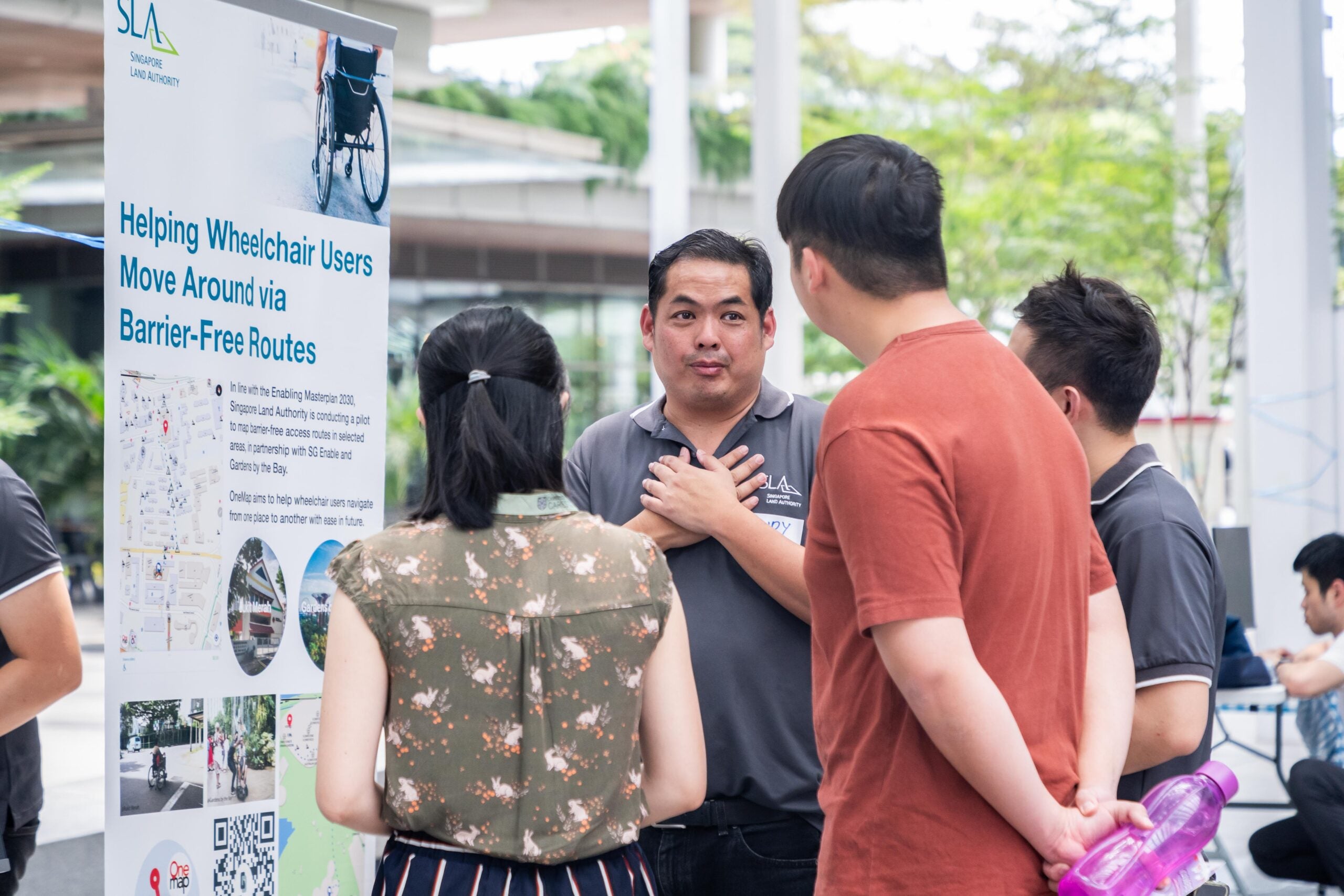
A representative from the Singapore Land Authority (SLA), dressed in a grey SLA polo shirt, stands with both hands over his chest while speaking to a small group of attendees. Behind him, a vertical banner reads “Helping Wheelchair Users Move Around via Barrier-Free Routes,” alongside visuals of maps and accessible pathways. Three visitors listen attentively under the trees in an open outdoor space.
This exchange highlighted OneMap, Singapore’s national mapping platform, which is being developed with access considered from the start. Rather than treating inclusion as an add-on, the platform integrates barrier-free features into its core design and redefined how public tools can support navigation for all users, more equitably and thoughtfully.
Student leadership also shone in design and innovation. Victoria Liew, a Master’s student in Design and Architecture, presented her thesis on creating built environments that support the Deaf community. She had earlier co-hosted a workshop with SADeaf, encouraging participants to redesign everyday public spaces.
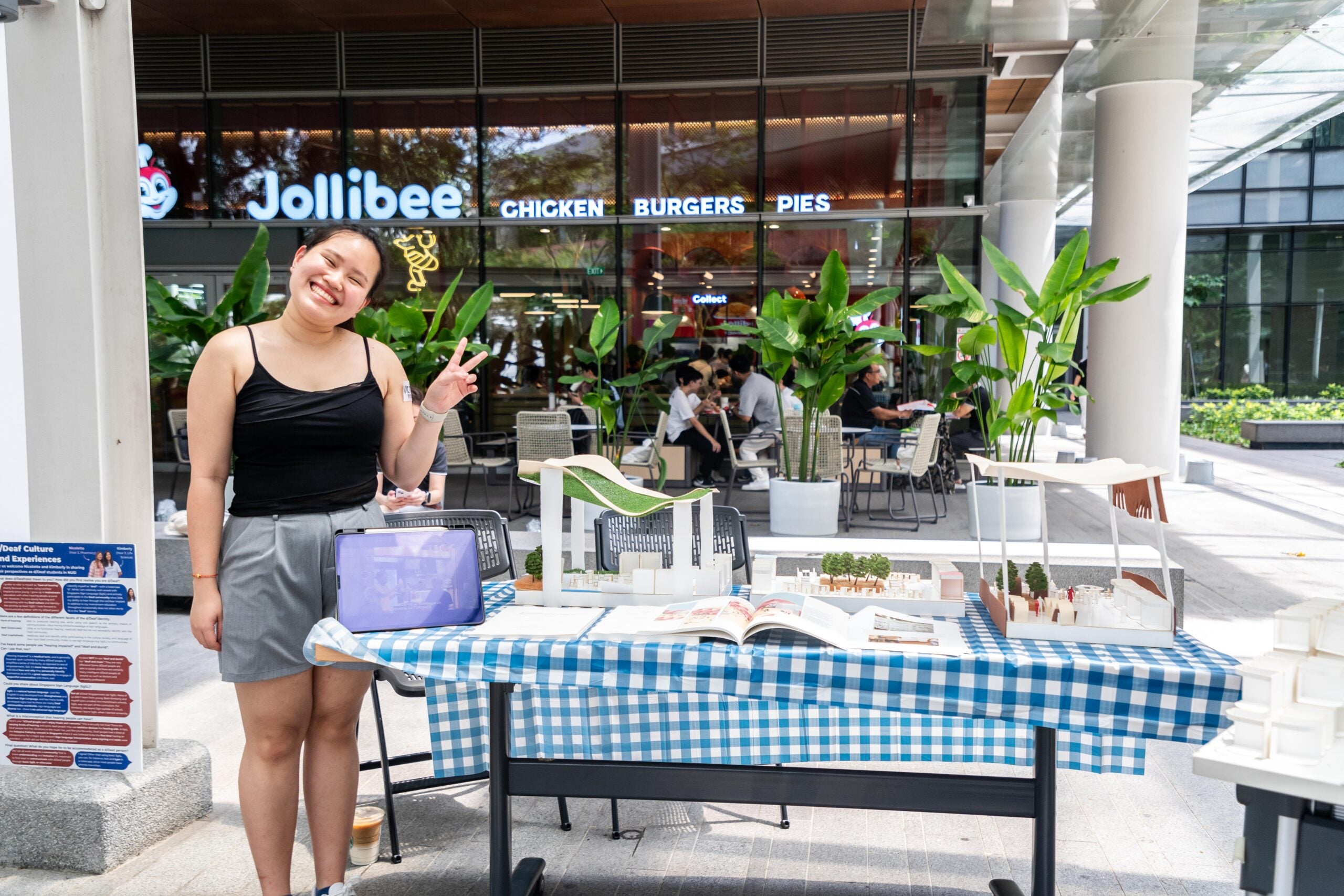
Victoria Liew stands beside a booth outdoors, flashing a peace sign with one hand. She wears a black tank top and grey shorts, and stands next to a table covered in a blue-and-white checkered cloth. On the table are detailed architectural models, open books, and a tablet displaying a presentation. Her booth features tactile models and sketches co-designed with participants from SADeaf. It’s design with purpose and people in mind.
Inclusive Fest 2025 reminded the NUS community that access is about more than physical spaces—it’s about people, perspectives, and participation. It was a festival that celebrated everyday acts of inclusion and highlighted how thoughtful design, intentional conversation, and peer-led support can transform a community.
Learn more about ongoing access support at NUS: nus.edu/accessibility
Join the conversation with #NUSCares.
Share:
Contributor
Office of Student Affairs
